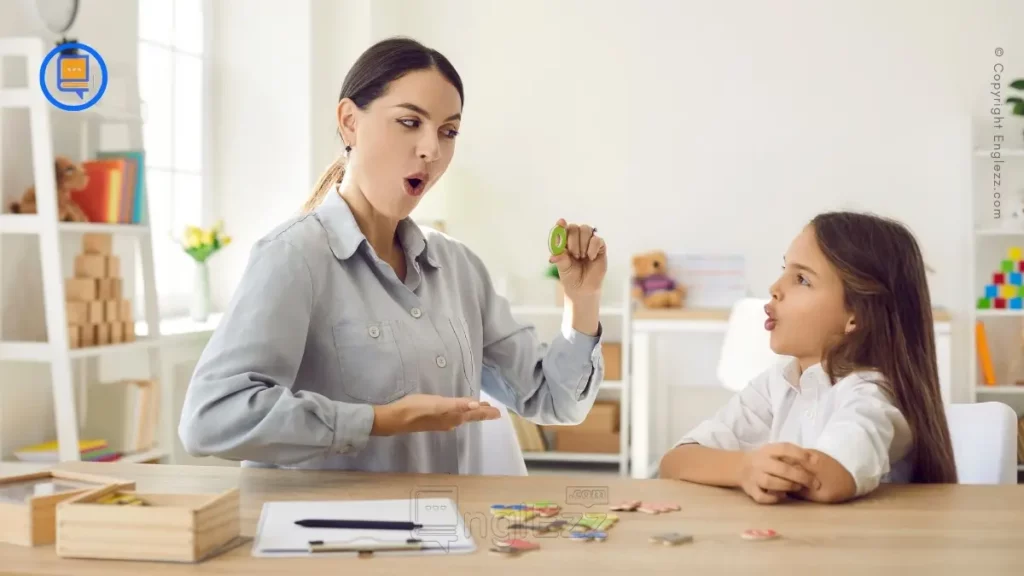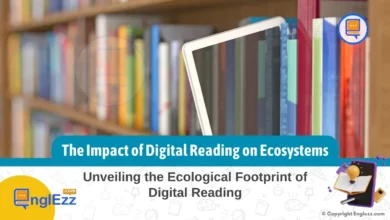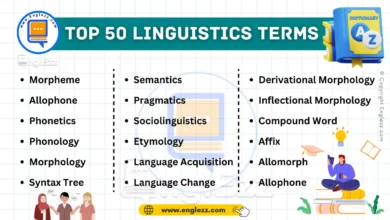Navigating the intricate world of language acquisition, educators and ESL instructors stand as guiding beacons in shaping students’ linguistic journeys. Amidst the vast landscape of teaching methodologies, pronunciation mastery emerges as a cornerstone of effective communication. In our exploration of mastering pronunciation in the classroom, we embark on a quest to unravel the artistry behind enunciating sounds with precision and fluidity.
Diving into the heart of language pedagogy, we illuminate pathways for educators to foster linguistic finesse within their classrooms.
Your Guide To Mastering Pronunciation in the Classroom
Why does pronunciation hold such paramount significance within the realms of language education? Beyond mere phonetic accuracy lies a realm where intonation breathes life into words, stress carries meaning, and connected speech intertwines syllables like threads weaving a tapestry of expression. As we traverse the seas of verbal cadence and articulatory finesse, our journey is marked by an unwavering commitment to excellence.

We champion not only the utterance of words but the orchestration of symphonies that resonate with clarity and eloquence. With each phoneme uttered, educators wield the power to sculpt confident communicators ready to engage with global audiences across linguistic borders. Discover the key to mastering pronunciation in the classroom with our comprehensive guide designed for teachers and students.
Understanding Pronunciation Concepts
When delving into the realm of mastering pronunciation in the classroom, educators and ESL instructors must have a comprehensive understanding of key concepts such as stress, intonation, and connected speech. Stress refers to the emphasis placed on specific syllables within words or sentences, essential for conveying meaning accurately. For example, in the word “record,” placing stress on the first syllable signifies a noun referring to an account of information, while stressing the second syllable transforms it into a verb indicating capturing audio or video data.
Intonation plays a crucial role in expressing emotions, attitudes, and intentions through pitch variations within sentences. Teaching learners to recognize rising intonation for questions or falling intonation for statements can significantly enhance their communication skills. Moreover, connected speech involves blending words together smoothly, where sounds shift or change based on their neighboring sounds. For instance, when native speakers say “I am going to” quickly in casual conversation, it often sounds like “I’m gonna,” showcasing how connected speech influences natural language flow.
By identifying features of connected speech like elision (omitting sounds), assimilation (sounds changing due to adjacent sounds), and linking (connecting words without pauses), educators can help learners comprehend spoken English more effectively. Understanding these pronunciation concepts enables teachers to guide students towards achieving not only linguistic accuracy but also natural fluency in communicating with others.
Techniques for Teaching Pronunciation
When it comes to teaching pronunciation effectively, incorporating various techniques can significantly impact learners’ awareness and progress in mastering spoken language skills.
Minimal Pairs
One innovative method is the use of minimal pairs, which are pairs of words that differ by only one sound, challenging students to differentiate between similar sounds. For instance, contrasting words like “ship” and “sheep” helps learners focus on subtle differences in pronunciation, honing their listening skills and phonetic accuracy. By engaging students in distinguishing these nuances through interactive exercises, educators promote a deeper understanding of phonetics.
Rhythm and Stress Pattern Practice
Another technique to enhance pronunciation awareness is rhythm and stress pattern practice. By emphasizing syllable stress in words and sentences, instructors can help students grasp the natural cadence of English speech. Utilizing rhythmic activities like clapping out stressed syllables or using visual aids to highlight word stress placement enables learners to internalize intonation patterns effortlessly. This approach not only improves pronunciation but also contributes to overall fluency as students learn the musicality of the language.
Incorporating Multimedia Resources
Incorporating multimedia resources such as videos and podcasts into pronunciation lessons offers a dynamic way to engage students in pronunciation activities. Watching authentic speakers enunciate words clearly and observing their lip movements provides visual cues that aid learners in mimicking correct pronunciation. Additionally, interactive pronunciation apps with voice recognition technology allow students to receive instant feedback on their articulation, fostering autonomous learning outside the classroom.
These modern tools not only make pronunciation practice more engaging but also cater to different learning styles, ensuring inclusivity and effectiveness in language instruction strategies.
Integrating Pronunciation Practice for Comprehensive Language Learning
Mastering pronunciation goes beyond just teaching sounds; it involves seamlessly infusing pronunciation practice into every aspect of language learning. By integrating pronunciation activities with vocabulary lessons, grammar exercises, and speaking practice, educators can create a holistic approach that enhances overall language skills development. For example, when teaching vocabulary, incorporating pronunciation drills alongside word definitions helps students not only understand the meaning but also pronounce the words correctly in context.
Furthermore, integrating pronunciation exercises into group discussions or role-playing activities allows students to practice real-life communication scenarios while refining their pronunciation. This dynamic approach not only fosters an interactive classroom environment but also reinforces the importance of clear and accurate speech in effective communication. For instance, engaging students in debates where they must articulate arguments clearly can enhance both their speaking skills and pronunciation accuracy simultaneously.
By emphasizing the significance of integration, educators can nurture students’ awareness of how proper pronunciation contributes to effective communication. Through consistent practice intertwined with various language components, learners internalize correct sounds and rhythms naturally as part of their overall language acquisition journey. Ultimately, this comprehensive approach to integrating pronunciation practice cultivates well-rounded language proficiency that extends beyond just articulating individual sounds to confidently expressing ideas and emotions fluently.
Interactive Pronunciation Activities
In the realm of language learning, interactive pronunciation activities serve as powerful tools to engage students and enhance their verbal skills. One effective activity is the “Pronunciation Pairwork,” where students work in pairs to practice specific sounds or words. By engaging in dialogues or role-plays, learners not only focus on pronunciation but also improve their communication skills in a dynamic setting. This activity fosters collaboration and peer-to-peer teaching, creating an interactive environment that promotes active learning.
Another engaging approach is utilizing technology tools like speech recognition software or pronunciation apps. These resources offer instant feedback on pronunciation accuracy, allowing students to self-assess and make necessary adjustments. For instance, using apps that highlight common mispronunciations and provide corrective feedback can be both educational and entertaining for learners. By incorporating technology into pronunciation practice, educators create opportunities for personalized learning experiences tailored to each student’s needs.
Furthermore, interactive pronunciation games can inject fun into the classroom while reinforcing correct pronunciation habits. Games such as “Pronunciation Bingo” or “Guess the Sound” not only make learning enjoyable but also challenge students to listen attentively and reproduce sounds accurately. Through gamification, educators can transform mundane pronunciation drills into engaging activities that motivate students to participate actively and strive for improvement. Ultimately, by integrating interactive activities infused with technology components, teachers can cultivate a vibrant learning environment that nurtures students’ pronunciation skills effectively.
Assessment and Feedback in Pronunciation Learning
When it comes to mastering pronunciation, assessment plays a crucial role in understanding students’ progress and identifying areas for improvement. Conducting regular assessments allows educators and ESL instructors to gauge the effectiveness of their teaching methods and tailor interventions to meet individual learners’ needs. For instance, incorporating pronunciation quizzes, oral presentations, or recorded speaking tasks can provide valuable insights into students’ pronunciation skills development over time. These assessments not only track progress but also serve as motivation for students to actively engage in improving their pronunciation.
Effective feedback is essential in guiding students through their pronunciation development journey. Constructive feedback should focus on specific aspects of pronunciation such as intonation patterns, stress placement, or vowel sounds while providing actionable steps for improvement. For example, instead of simply highlighting errors, instructors can offer model pronunciations, practice drills, or visual aids to help students grasp the correct articulation of challenging sounds. By creating a supportive environment where mistakes are viewed as opportunities for growth, educators empower learners to embrace challenges and persist in refining their pronunciation skills.
Strategies for delivering feedback should be tailored to individual learning styles and preferences. Some students may benefit from visual feedback such as spectrograms or tongue diagrams to visualize sound production mechanisms, while others may respond better to auditory cues like recordings that compare their speech with native speakers’ models. Additionally, incorporating peer-review activities where students provide feedback to each other fosters collaboration and encourages self-reflection on pronunciation accuracy.
By personalizing feedback techniques according to diverse learning needs, educators can enhance students’ motivation and comprehension of pronunciation concepts effectively.
Cultural Context in Pronunciation Teaching
When it comes to pronunciation teaching, understanding the cultural context is pivotal. Cultural nuances play a significant role in how sounds are articulated and perceived. For example, regional accents can heavily influence pronunciation patterns, which may differ from standard language models. Educators and ESL instructors need to be attuned to these cultural variations to provide comprehensive guidance to their students. By acknowledging and embracing diverse linguistic backgrounds, teachers can create an inclusive learning environment that celebrates multiculturalism while honing precise pronunciation skills.

Introducing culturally relevant resources and materials is a powerful way to immerse students in the richness of language diversity. Incorporating authentic audio samples featuring different accents and dialects allows learners to grasp the nuances of pronunciation within specific cultural contexts. For instance, showcasing British English versus American English pronunciation through popular songs or movie clips enhances students’ awareness of phonetic variations stemming from distinct cultural origins. By exposing learners to a wide spectrum of linguistic influences, educators foster a deeper appreciation for the interconnectedness between language and culture.
Furthermore, utilizing literature and poems from various cultures can serve as valuable tools for exploring pronunciation intricacies within a broader societal context. By studying poems written in different languages or dialects, students not only refine their pronunciation skills but also gain insights into the historical, social, and emotional dimensions that shape how words are spoken within specific cultural frameworks.
This holistic approach to teaching pronunciation not only enhances language proficiency but also cultivates empathy and respect for diverse worldviews among learners. Embracing cultural relevance in pronunciation instruction transforms language learning into a dynamic exploration of global communication styles, enriching students’ understanding of proper pronunciation beyond mere articulation exercises.
Enhancing Language Learning Through Effective Pronunciation Instruction
Mastering pronunciation is not just about articulating sounds clearly; it’s a gateway to improved language skills and enriched communication. By embracing the comprehensive guide provided in this article, educators, English language teachers, and ESL instructors can transform their classrooms into dynamic spaces where students thrive in linguistic development. The insight shared on pronunciation concepts, innovative teaching techniques, interactive activities, assessment strategies, and cultural considerations equips professionals with the tools needed to elevate their students’ language learning experiences.

As we conclude this journey through the art of mastering pronunciation in the classroom, it becomes evident that effective pronunciation instruction goes beyond phonetics – it fosters confidence, understanding, and connection within multicultural learning environments. By prioritizing pronunciation practice alongside other language components, educators contribute significantly to enhancing overall language proficiency.
Embracing cultural diversity in pronunciation teaching not only enriches students’ linguistic competencies but also nurtures respect for linguistic variations worldwide. Let us continue to explore new horizons in education, empower learners with the gift of eloquent expression, and embark on a transformative voyage towards mastering pronunciation as a pivotal element in language acquisition.








